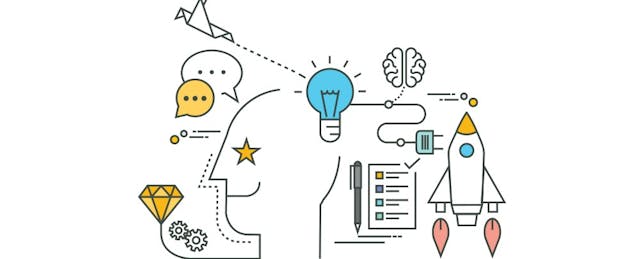I sat at a table with faculty, technologists, CIOs, startup founders and students, all gathered under one roof to tackle the question: How might we use application program interfaces (APIs) to empower students and faculty members to have voice, agency and digital literacy in their institutions? We met at “Indie Edtech and the Personal API,” a weekend event hosted at Davidson College, where we built prototypes for a student-centered API.
The gathering was the first in a series of focused conversations on “Indie Ed Tech”—a movement that encourages students to create, not merely consume, the technology that they use. Kristen Eshleman, Davidson’s director of digital learning research and design, organized the event with Adam Croom, director of digital learning at the University of Oklahoma. They encouraged participants to bring their own students. (Kristen is my edtech mentor.)
For me, the weekend was an opportunity for collaboration across job descriptions and power structures. We learned, empathized and built for students with students. Though the technology is important, it is merely a vehicle for creativity that only comes when diverse sets of people create tools together.
An API Primer
If you have the right code and key, an API will let you access and manipulate data. APIs act as gatekeepers. And they're everywhere: Twitter, Facebook, Instagram, Slack, Evernote—you name it. Using Twitter’s API, I can ask Twitter to tweet for me. For instance, I used it to make this bot (@DesignThinked) that tweets random “How might we…” questions every five minutes. I don’t have to be at a computer clicking “Tweet” in order to keep the account active.
It’s the same for a University. A Davidson College API would let me, with a simple piece of code, give or request information around courses, faculty, credits or even currently empty campus computers. If I had access to Davidson’s API, I could then connect it to another Twitter bot that would let me tweet, “Computer lab X has a free computer #IndieEdTech” every time a computer opens up. I could create and publish an app that displays free computers around campus. API’s let you build, hack and remix current systems.
Putting the Personal in API
At the core of the personal API is the radical mission to put control over data (and its access) in the hands of students. This is both a pedagogical act and a creative opportunity, informing students that they can access their own information as well as create interfaces to do with that data what they please. It gives them a seat at the tables where the edtech powers sit, moving them one step closer to a status of equality rather than that of a passive consumer.
For the past year or so, Jim Groom, of Domain of One’s Own, and Phil Windley, of BYU, (who both were at this event) have been asking how to implement this structure: How do we give students ownership over their data and then require institutions to use APIs to access that data? This is a complicated and radical shift. This is why we spent half of the #IndieEdTech weekend in a “design sprint,” building prototypes of what we think a student-centered personal API could look like.
Designing With Students, for Students
The session used principles of design thinking to place students like me around tables with edtech tool-builders and decision-makers in order to break down the hierarchies and drive empathy. I had a CIO asking me questions like, “What do you love to do?” “Why do you use the tools that you use?” and “What’s it like being in a classroom all day?” The goal was to use the empathetically obtained answers to create a tool that required a personal API.
Once we saw eye-to-eye, we started designing a prototype. Our group focused on creating a tool that made access to an API easy and personal. We called it “APImixer,” envisioning a drag-and-drop interface so that students could easily design tools for themselves and their peers, acknowledging the very unique needs of each student. The tool empowered the students to create their own course-selection program, faculty-review interface, or first-generation-student question portal. It acknowledged that a top-down approach to defining needs through vast, templated programs doesn’t meet the needs of every student. And the power to create those structures holds an intrinsic motivation. Forging your own tools is the first step toward freedom.
By the time the weekend was over, I had a renewed appreciation for tools and code as a way to open up creativity for students. The personal API is just that. But I also realized the empowerment of sitting at a table and empathizing with those faculty, staff and technologists who make the final calls. #IndieEdTech gives students the tools to create, in addition to a seat at the design table. It allows them to negotiate with the university on their own terms.


